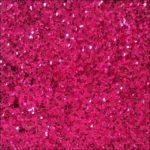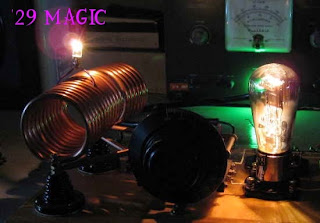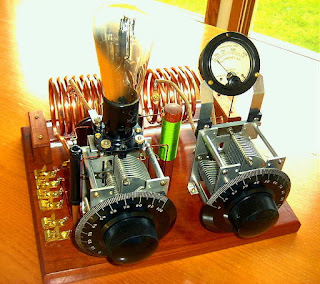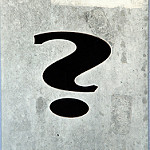 LHS Episode #258: The Weekender XIX
LHS Episode #258: The Weekender XIX
 You have tuned into Episode 258 of Linux in the Ham Shack. This episode is the 19th edition of our Weekender series. In this episode, we discuss upcoming amateur radio contests, special event stations, open source conferences and more. We also give you some new distributions to try, amateur radio and open source challenges and then dive into our innate hedonism, discussing food, wine, song and much more. Thank you for listening.
You have tuned into Episode 258 of Linux in the Ham Shack. This episode is the 19th edition of our Weekender series. In this episode, we discuss upcoming amateur radio contests, special event stations, open source conferences and more. We also give you some new distributions to try, amateur radio and open source challenges and then dive into our innate hedonism, discussing food, wine, song and much more. Thank you for listening.
73 de The LHS Crew
Russ Woodman, K5TUX, co-hosts the Linux in the Ham Shack podcast which is available for download in both MP3 and OGG audio format. Contact him at [email protected].
 LHS Episode #257: They’ve Gone Fuchsia
LHS Episode #257: They’ve Gone Fuchsia
 Hello, listeners! Welcome to Episode #257 of Linux in the Ham Shack. In this episode, the hosts discuss CNPOTA, YOTA and a bunch of other OTAs. There's also information on balloon-based repeaters, the demise of Palm Radio, OpenSpot 2, Apple's new T2 security chip, emotion analyzing AI and much more. Thank you for tuning in. We appreciate you, one and all.
Hello, listeners! Welcome to Episode #257 of Linux in the Ham Shack. In this episode, the hosts discuss CNPOTA, YOTA and a bunch of other OTAs. There's also information on balloon-based repeaters, the demise of Palm Radio, OpenSpot 2, Apple's new T2 security chip, emotion analyzing AI and much more. Thank you for tuning in. We appreciate you, one and all.
73 de The LHS Crew
Russ Woodman, K5TUX, co-hosts the Linux in the Ham Shack podcast which is available for download in both MP3 and OGG audio format. Contact him at [email protected].
 In the new place with new challenges.
In the new place with new challenges.
 |
| Our view of Toronto |
 |
| In the livingroom |
I was able to run coax along the wall in such a way that it's not noticeable and out to our balcony. I took advantage of a persian carpet runner in the hallway to hide the coax. I then used Comet CTC 50M to get the coax outside. At the old place I was able to leave the MFJ antenna on the balcony but were we are not at times the wind that comes off lake Ontario is crazy so it's indoors.....not that it matters as the SWR is very poor. In the next post an update on my Sun SDRpro 2 rig.
Mike Weir, VE9KK, is a regular contributor to AmateurRadio.com and writes from New Brunswick, Canada. Contact him at [email protected].
 ICQ Podcast Episode 280 – Remote Control Amateur Radio Rig
ICQ Podcast Episode 280 – Remote Control Amateur Radio Rig
In this episode, Martin M1MRB is joined by Leslie Butterfield G0CIB, Matthew Nassau M0NJX and Bill Barnes N3JIX to discuss the latest Amateur / Ham Radio news. Colin M6BOY rounds up the news in brief and this episode’s feature is Remote Rig Amateur Radio Control.
ICQ AMATEUR/HAM RADIO PODCAST DONORS
We would like to thank Nigel Wells (2W0CGM), Edward Efchak and Malcolm Heath (KI7ZSX) along with our monthly and annual subscription donors for keeping the podcast advert free. To donate, please visit - http://www.icqpodcast.com/donate
- Armando M0PAM Champions Local Amateur Radio Rights
- LED Lighting Can Disrupt Radio Communications
- Licence to Supply Radio Transmitting Equipment
- Using Authentication in Amateur Radio
- HMS Belfast Armistice Amateur Radio Special Event Callsign
- Satellite Operation from RMS Queen Mary
- ROTA Recipes On The Air
- UKube-1 Falls Silent
Colin Butler, M6BOY, is the host of the ICQ Podcast, a weekly radio show about Amateur Radio. Contact him at [email protected].
 SOTA Activation in Switzerland (HB/SG-049)
SOTA Activation in Switzerland (HB/SG-049)

Joyce/K0JJW and I were planning a trip that included some time in Europe. It turned out that our airline route would connect through Zurich. Rather than spend a few hours in an airport, we decided to spend a day or two in Switzerland.
Somehow the discussion turned to Summits On The Air (SOTA) and whether we should do an activation in Switzerland. Slowly, a plan developed to do a “check the box” activation on a local summit near Zurich. As readers of this blog know, I’ve been exclusively using VHF/UHF for SOTA activations. We decided to pack really light so SOTA gear on this trip was extremely limited: 2m/70cm handhelds and vertical antennas. Sorry, no yagi.

SOTA Help
I came across this thread about the proper callsign prefix when operating under CEPT rules in Switzerland. The SOTA association is called HB but valid callsign prefixes are HB9 (full license) or HB3 (novice license). This sent me back to the CEPT rules to make sure I understood them correctly: Recommendation T/R 61-01 and ECC Recommendation (05) 06. The short story is that as an Amateur Extra licensee, I operate as HB9/K0NR. Joyce has a General Class license which corresponds to the “novice” category under CEPT, so she uses the callsign HB3/K0JJW. Apparently as an Extra, I had previously overlooked or forgotten some of the fine points of CEPT. Specifically, US Extras are given full privileges by CEPT but Generals can only operate in a subset of CEPT countries while Technicians get no privileges at all (yet another reason to upgrade your license).
I also put out a request for advice on the SOTA reflector:
Joyce/K0JJW and I have one day in Zurich later this month. Somehow the idea of squeezing in a SOTA activation while in Switzerland made it onto the itinerary.
This will be on 2m FM only with basic gear. The current plan is looking like a hike up Altberg (HB/ZH-015) but we are open to other ideas.
A number of people responded with helpful information. Soon I was contacted by Paul/HB9DST who suggested we do an activation together. Paul is an American living just outside of Zurich (his US callsign is AA1MI) and is very active in SOTA. We soon had our eyes on the Churfirsten SOTA summits which are southeast of Zurich (see Paul’s activation reports). Ultimately, we chose the summit of Selun (HB/SG-049).
Activating Selun (HB/SG-049)

Access to the trail was via several train rides and a bus ride, then a short walk to the Selun cable car. This cable car is quite unique in that it is a homebrew design (see the photo below). We piled into the cable car and rode it to where the real hike started.


On the Trail
The bottom station of the cable car is at ~3000 feet (900 m) and took us up the hill to ~5000 feet ( 1500 m), so it definitely sliced off some elevation gain. The summit of Selun is at 7234 feet (2205 m), which gave us a moderate but not crazy difficult hike. My GPS app recorded a distance of 1.7 miles and 1900 vertical feet (one way).


The weather was excellent for late October with blue skies above and some clouds laying in the valleys.

Paul is an HF/CW enthusiast so that made sharing the bands very easy. He strapped his fishing pole to the summit cross and strung out an end-fed wire for 40m, 30m and 20m, making a total of 40 QSOs. Joyce and I took turns on 145.550 MHz FM using our Yaesu FT-1DR handheld radios with vertical antennas.


I made 13 contacts on VHF, including three Summit-to-Summit (S2S) contacts. HB9PMF was close by on SG-017 (Hinterrugg) another summit in the Churfirsten. I also stayed on the summit while Joyce and Paul hiked down out of the activation zone and worked me for chaser points, giving me a total of 15 QSOs.
My log is shown below. All contacts were on 145.550 MHz. Note that the calling frequency in Switzerland (all of Europe?) is 145.500 MHz. Joyce worked a subset of these stations.

Operating notes
I have to admit that it was a challenge keeping everything straight while making QSOs. I had to add the HB9 prefix on the front of my US callsign and “portable” on the tail end (local practice for activator stations). That’s “HB9/K0NR/P” instead of just “K0NR”…there is a reason we prefer shorter callsigns. All that along with the usual signal report, name, SOTA designators, etc. Fortunately, everyone we worked had reasonable English skills. Mein Deutsch ist nicht so gut. If I sounded a bit confused, I probably was and at 7200 feet I can’t blame the altitude.
It was definitely a thrill to work the S2S stations and two other countries (Germany and Austria) on VHF. (I have never done that on SOTA VHF from Colorado…I rarely work anyone outside of the state.)

After we hiked back down, Paul suggested that we had to stop in at the local farmhouse restaurant (Selun Ochsenhuette) for a drink. It was all part of the Swiss SOTA experience!
Paul was a magnificent host for our short stay in Switzerland. We stayed two nights at his place and he guided us on a fantastic SOTA activation. Without his help, we would have probably activated a small summit near Zurich and would have been in the low clouds all day. We would have left the city thinking “I bet this is a beautiful place when the sun is shining.” Instead, we had an excellent day hiking the Swiss mountains and playing ham radio. Thanks, Paul!

Joyce did find one small way to repay Paul’s kindness. Being an skilled seamstress, she sewed Paul’s prized SOTA Mountain Goat patch onto his pack. Nice job, Joyce!
73 Bob K0NR
The post SOTA Activation in Switzerland (HB/SG-049) appeared first on The KØNR Radio Site.
Bob Witte, KØNR, is a regular contributor to AmateurRadio.com and writes from Colorado, USA. Contact him at [email protected].
 Here Comes The ’29 QSO Party!
Here Comes The ’29 QSO Party!
 |
| courtesy: Lou, VE3AWA |
This Saturday night as well as the next will be the annual Bruce Kelley 1929 QSO Party, otherwise known as the '1929 BK'.
Only transmitters that are 'era-appropriate' are allowed to be used. More specifically, transmitters must employ tubes that were available in 1929 or earlier, and transmitters must be self-excited. No crystals allowed! Crystals were new and largely unaffordable for most hams back in the depression days.
The year of 1929 marked a real turning point in amateur radio as governments finally cracked-down on things such as frequency stability, out of band operations and re-alignment of call districts. In short, hams were henceforth required to behave themselves and to clean up their signals and methods of operation.
 |
| courtesy: http://www.arrl.org/ |
If you tune across the CW bands during the next two Saturday nights, you will have the rare opportunity to hear exactly what the bands must have sounded like back in the early '30s'.
For the most part you will hear single-tube Hartley, Colpitts or TNT oscillators along with a few two-tube MOPAs thrown in. Many of them will suffer the same problems encountered by the boys of '29 ... chirp, drift, buzzy notes and frequency instability from antennas swaying in the wind.
Again this year, signals should be a little louder as well, since the previous long-time power limitation of 10W input has been increased to 25W.
The MOPAs will sound much better but some surprisingly nice-sounding signals can be heard coming from properly tuned and optimised single-tube oscillators. I recall being blown away by the lovely sounding signal I heard from such a rig when first tuning into the BK activity several years ago, only to learn that it was a self-excited Hartley using 1/4" copper tubing for the oscillator tank circuit!
The '29 watering-hole on 80m will be around 3550-3580 kilocycles (be careful not to confuse this with kilohertz!) while the early afternoon to post-sunset 40m activity will be found from 7100-7125 kc. There may even be a few on the very low end of 160m. Although many of these transmitter styles were used on 20m and higher, BK rule-makers have wisely decided not to inflict these sounds on the present populace as it would likely keep the 'Official Observers' busy for several days writing pink-slips.
This year I will leave the MOPA on the shelf and set up my Hull Hartley as I haven't used it since building the MOPA a few years ago. If it's very windy (almost assured), the Hartley will really sound like 1929!
 |
| My own Hull Hartley |
You can learn more about amateur radio happenings leading up to and following the 1929 crackdown in my earlier series of 'Why '29' blogs here:
Part 2
Part 3
Part 4
Those wishing to put something together for next year's event can find everything needed here:
Building '29-Style - Part 1
Building '29-Style - Part 2
Let's hope for good conditions for this event as the last few years have been adversely affected by geomagnetic storming. Poor propagation or not, I guarantee there will be plenty of '29ers busy calling 'CQ AWA' on the low bands.
Complete BK details are available here.
Steve McDonald, VE7SL, is a regular contributor to AmateurRadio.com and writes from British Columbia, Canada. Contact him at [email protected].
 LHS Episode #256: Live Q&A
LHS Episode #256: Live Q&A
 Welcome to Episode 256 of Linux in the Ham Shack. In this episode, we take a slight departure from our normal topics and episode style to try out the features of our Discord server. We invited listeners to log in and participate in the program, bring up topics of discussion and ask questions of the hosts and other guests. We feel this experiment went rather well, generated a lot of good information, and was entertaining to boot. That said, we hope to try more of these in the future. Thank you to everyone who participated and many thanks to everyone who listens.
Welcome to Episode 256 of Linux in the Ham Shack. In this episode, we take a slight departure from our normal topics and episode style to try out the features of our Discord server. We invited listeners to log in and participate in the program, bring up topics of discussion and ask questions of the hosts and other guests. We feel this experiment went rather well, generated a lot of good information, and was entertaining to boot. That said, we hope to try more of these in the future. Thank you to everyone who participated and many thanks to everyone who listens.
73 de The LHS Crew
Russ Woodman, K5TUX, co-hosts the Linux in the Ham Shack podcast which is available for download in both MP3 and OGG audio format. Contact him at [email protected].













